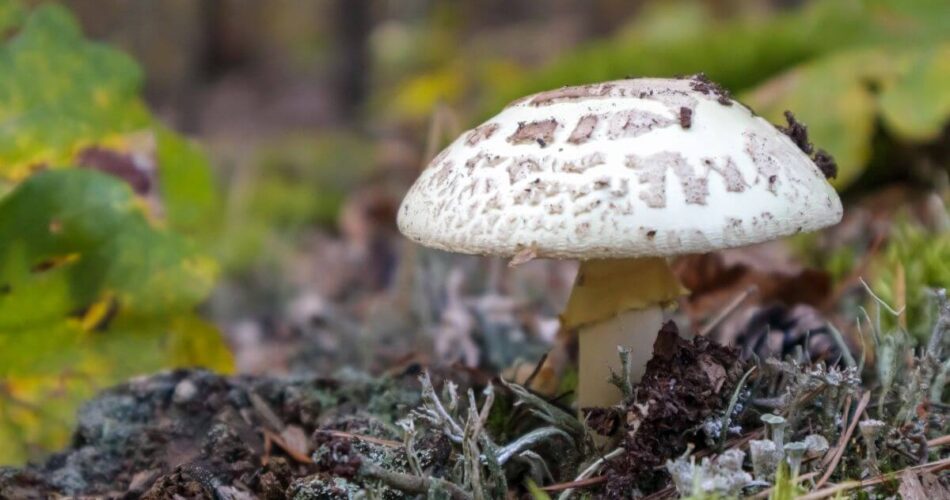Did you know that there’s a fungus that can infect rye and other cereal grains? It’s called Claviceps purpurea, and it causes the kernels to swell up and turn purple. Let’s find out more about this species.
Farmers need to be careful when they’re harvesting crops infected with C. purpurea, because the fungus can produce alkaloids that are toxic to people and animals. In fact, one of these alkaloids – ergotamine – is used to make medications like migraine drugs and birth control pills. Pretty cool, huh?
Claviceps Purpurea – History
Claviceps purpurea, or ergot fungus, is a plant pathogen that produces ergot alkaloids that can cause ergot poisoning in humans and other mammals. The fungus infects grain such as rye and wheat, and the resulting disease is characterized by convulsive seizures and gangrene. Ergot has been blamed for numerous outbreaks of mass hysteria and even for the Salem witch trials. In recent years, the fungus has been used to produce LSD and other psychedelic drugs.
The name “claviceps” comes from the Latin for “club foot,” a reference to the characteristic club-shaped fruiting bodies (known as sclerotium) that the fungus produces. Purpurea refers to the purple color of the ergot sclerotia. The fungus is also known as “rye ergot,” “staggers,” and “ergotism.”
Ergot Disease
The Claviceps purpurea fungus grows on rye and other grasses, and produces alkaloids that can cause ergotism in humans and other mammals. It is characterized by muscle spasms, convulsions, and gangrene. The alkaloids produced by C. purpurea include ergine (also known as lysergic acid amide or LSA), ergonovine, and ergometrine. These alkaloids can cause vomiting, diarrhea, and abdominal pain. In severe cases, this condition can lead to seizures, gangrene, and death.
The Claviceps purpurea fungus has been blamed for numerous outbreaks of mass hysteria and for the Salem witch trials. These epidemics were also known as Saint Anthony’s Fire.
In 1692, the residents of Salem, Massachusetts were gripped by fear of witchcraft. Nineteen people were accused of witchcraft and executed, and many more were jailed or forced to flee the town. Some historians have suggested that the accusations of witchcraft were fueled by ergotism, as the symptoms of this disease can include delusions and hallucinations.
In recent years, the Claviceps purpurea fungus has been used to produce LSD (lysergic acid diethylamide) and other psychedelic drugs. LSD is a powerful psychedelic drug that can cause hallucinations and delusions. It is illegal in most countries, and its use can lead to addiction and mental health problems.
Claviceps Purpurea – Fungus Morphology and Distribution
Claviceps purpurea is a fungus that parasitizes various grasses, including rye, wheat, and barley. The pathogen overwinters on infected seed heads, and in the spring it produces spores (conidia) that are disseminated by wind to other grasses. Once a plant is infected, the fungus grows inside the developing seed head, forming a structure called the ergots. The ergots contain toxins that can cause fungal infection in humans and other animals if they are consumed.
Claviceps purpurea has a complex lifecycle that involves both sexual and asexual reproduction stages. The fungus produces two types of spores: macroconidia and microconidia. The macroconidia are large, multicelled spores that are produced on the tips of specialized hyphae called conidiophores. The microconidia are small, single-celled spores that are produced in clusters on the surface of infected plant tissue. Claviceps purpurea can also reproduce asexually by producing chlamydospores.
Claviceps Purpurea – Habitat
Claviceps purpurea can be found in temperate regions of the world, including Europe, North America, and Asia. It typically grows on rye grasses, but it can also infect other types of plants. The fungus produces a poisonous compound called ergometrine, which is responsible for the symptoms of ergot poisoning. Ergometrine can be found in the grain of affected plants, as well as in the bodies of animals that have eaten the grain. When these animals are consumed by humans, they can also experience the symptoms of ergot infection.
Treatment for ergotism includes administration of anticonvulsants and other medications. In severe cases, amputation of affected limbs may be necessary. Claviceps purpurea is sometimes used as a hallucinogenic drug, due to the presence of ergometrine. However, this use is highly dangerous and can lead to death.
The world of fungi is fascinating, isn’t it? Apparently they can even cause outbreaks and be associated with dark magic! If you are interested in more stories like this, check the rest of our articles.
Similar Posts:
- Ergot: A Psychoactive Fungus That Grows on Rye
- Psilocybe Galindoi: A Species of Psilocybin Mushrooms
- Cow Pasture Hallucinogenic Mushrooms – Cheap Poop Shrooms
- Types of Psychedelics: Hallucinogen Drugs Facts, From LSD to Psilocybin
- Magic Mushrooms Spores – What Are Those? How Are They Used? Let’s Find Out
- Can Dogs Smell LSD? Everything on Drug Dogs & LSD
- LSD Symbol (LSD Molecule) – Psychedelic Drugs & Chemistry




